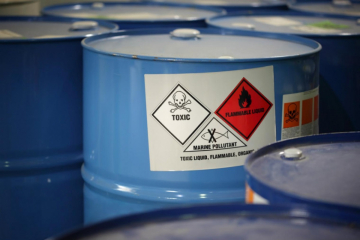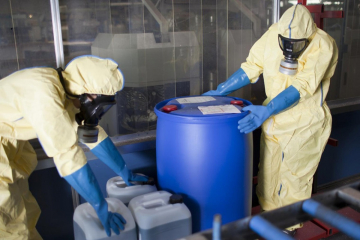By now, most everyone is aware of the RCRA hazardous waste generator improvement rule changes that went into effect, but not everyone has figured out what that means for them and how to navigate the resulting (highly complex) implementation period.
By now, most everyone is aware of the RCRA hazardous waste generator improvement rule changes that went into effect, but not everyone has figured out what that means for them and how to navigate the resulting (highly complex) implementation period. For organizations operating in multiple states, the struggle is particularly real, leaving EHS managers unsure of how to remain compliant, much less how to plan ahead to mitigate their risk.
Understanding the Pitfalls
While RCRA is a federal law, each state can choose whether to allow federal EPA regulation to implement the law or build its own plan to self-regulate in lieu of the EPA. Most states and territories choose the latter, and this inconsistency across state borders makes it that much harder for organizations to get it right. While some states are using this opportunity to make their plans stricter than required, some changes within the improvements can actually be seen as relaxing the existing standards (for example, regarding episodic generation), and states never have to adopt those policies if they so choose.
The second issue is timing—states were given two years to respond to the changes, and while some states jumped into action, others are taking a more unhurried approach, while still others will choose to defer to the federal standard. The result is that businesses can’t assume that what was compliant yesterday will still be compliant tomorrow--implementation is occurring piecemeal as states move to meet the federal standard in different ways. The EPA does provide general updates (see their implementation map here), but for most organizations, you will have to check the map ahead of every single waste audit in order to flag and respond to changes.
The Best-Laid Plans
In the face of brand pressure, citations, and hefty fines, most generators are actively seeking to reduce their risk and liability both in the short- and long-term. However, even though this update is intended to make regulations less complex, its practical application can result in redefining key terms and adding complexity to business operations. The administrative change from Conditionally Exempt Small Quantity Generator to Very Small Quantity Generator comes with the extra effort of revised regulatory citations and new optional alternatives such as allowing waste consolidation from multiple sites under new rules.
Even more confusing, trying too hard to plan ahead or standardize across states can actually put a company out of compliance. By moving too far ahead of the curve for states you operate in, you run the risk of non-conforming with their current-state regulations, usually on the administrative side related to areas such as document control or use of technical terms. Alternately, trying to base compliance on the EPA standard can result in non-compliance in states where their own regulations are stricter than required. It can all begin to feel like a no-win proposition.
A Fine Balance
So, what is an EHS manager to do? How do you manage risk responsibly in difficult (and ever-evolving) circumstances? First and foremost is to prioritize communication. One area we often see organizations struggle with is in the gap between corporate EHS and the individual sites, so maintaining a clear understanding of responsibilities, priorities, and risk is critical.
While both over- and under-preparing open you up to non-compliance, there is a middle ground. Waste managers should thoroughly understand their organization’s site implications and prepare to meet regulations at least as strict as the national ones, while also remembering that this is not a one-and-done process. You may also want to consider changes to your waste auditing protocols to account for additional research and evaluation. Federal regulations implemented under the RCRA laws will continue to evolve as new rules are issued by the EPA--just last month the EPA issued changes on pharmaceuticals and nicotine waste.
Particularly in cases where the EHS manager has many other responsibilities outside of waste management, or in more centralized organizations with one national coordinator, it’s very difficult for any one person to know everything. This is an area where outside consultants can help, either to alleviate internal bandwidth strains or provide expertise beyond your normal jurisdiction.
Waste risk management is crucial for maintaining business operations but can feel daunting in circumstances such as these. However, with good communication, solid planning, and sensitivity to the still-evolving nature of the situation, EHS managers can successfully navigate this complicated transition.
Need a little extra help with your hazardous waste processes and programs? Contact us today for more information on how we can help.
Want more news and insights like this?
Sign up for our monthly e-newsletter, The New Leaf. Our goal is to keep you updated, educated and even a bit entertained as it relates to all things EHS and sustainability.
Get e-NewsletterHave any questions?
Contact us to discuss your environment, health, safety and sustainability needs today.




